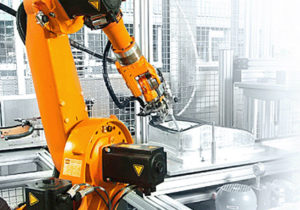Facts About Industry 4.0
When we think about robots, the first thing that comes to mind is science fiction characters like R2-D2. But robots becoming part of our everyday life is less and less fictional.
Industry 4.0 has arrived, and it means that automation and data exchange will play a major role in manufacturing. Those manufacturers who were open to trying new technologies already have smart factories in which industrial robots are doing most of the work. Here are some facts and numbers that illustrate what this trend really means:
- Even though the first industrial robot, which was installed at General Motors, was designed and produced in the United States, most of them are currently manufactured in Asia and Europe.
- About 1.8 million robots are in operation at the moment, in comparison, only 1.6 million people live in Philadelphia. By 2018, 2,3 million robots should be in use, which is equivalent to Huston’s population!
- Following today’s trends, by 2099 70% percent of our jobs will be automated. Similar to the process during the industrial revolution 200 years ago when 99% of farm jobs became automated.
- Robotics have increased labor productivity by about 0.35% annually — or by about the same amount as did the steam engine during the years 1850 to 1910
- The demand for robots is highly concentrated: 80% of robots sold go to only these 5 countries: U.S., South Korea, Japan, Germany and China.
- We might not think of it at first, but South Korea is the most automated country. They have 4,37 robots installed per 100 employees, which 14,5 times more than China!
![injection-molding-machine-tending-robot2]() Manufacturing is the biggest sector considering the use of robots, it takes up 40% of them. Within manufacturing, automation (43%), electronics (21%) and metal (9%) are the most significant segments.
Manufacturing is the biggest sector considering the use of robots, it takes up 40% of them. Within manufacturing, automation (43%), electronics (21%) and metal (9%) are the most significant segments.
- Some factory robots, like Baxter from Rethink Robotics, are purchasable for as little as $25,000 already, which is the same as paying a full-time human worker $4 an hour over the life of the machine.
- Many employees fear that they won’t be able to compete with robots and they will lose their jobs to them. If we look at the U.S., between 2009 and 2015 the number of robots has increased by 55%, and the unemployment rate decreased by 42%. Are their worries ill-founded maybe?
- Certain robots are not only to enhance efficiency or productivity but to make art: for example in Manchester a robot orchestra performed in front of an audience in July for the first time.
If you want to find more interesting info on the subject of industrial robots, check out this info-graph from TradeMachines!
Read also Facts About Robots
Read also How Does A Bomb Disposal Robot Work



Comments are closed.